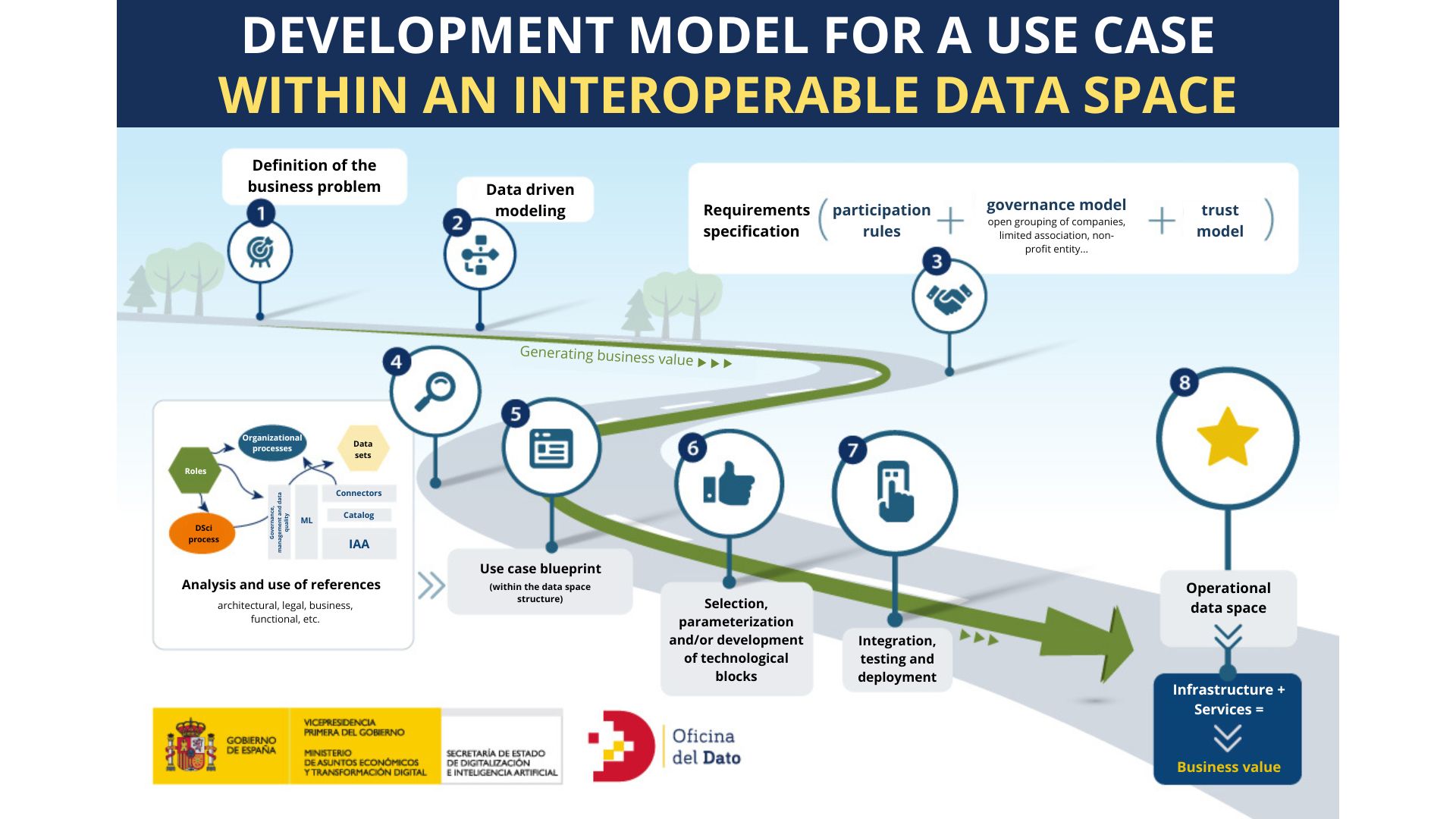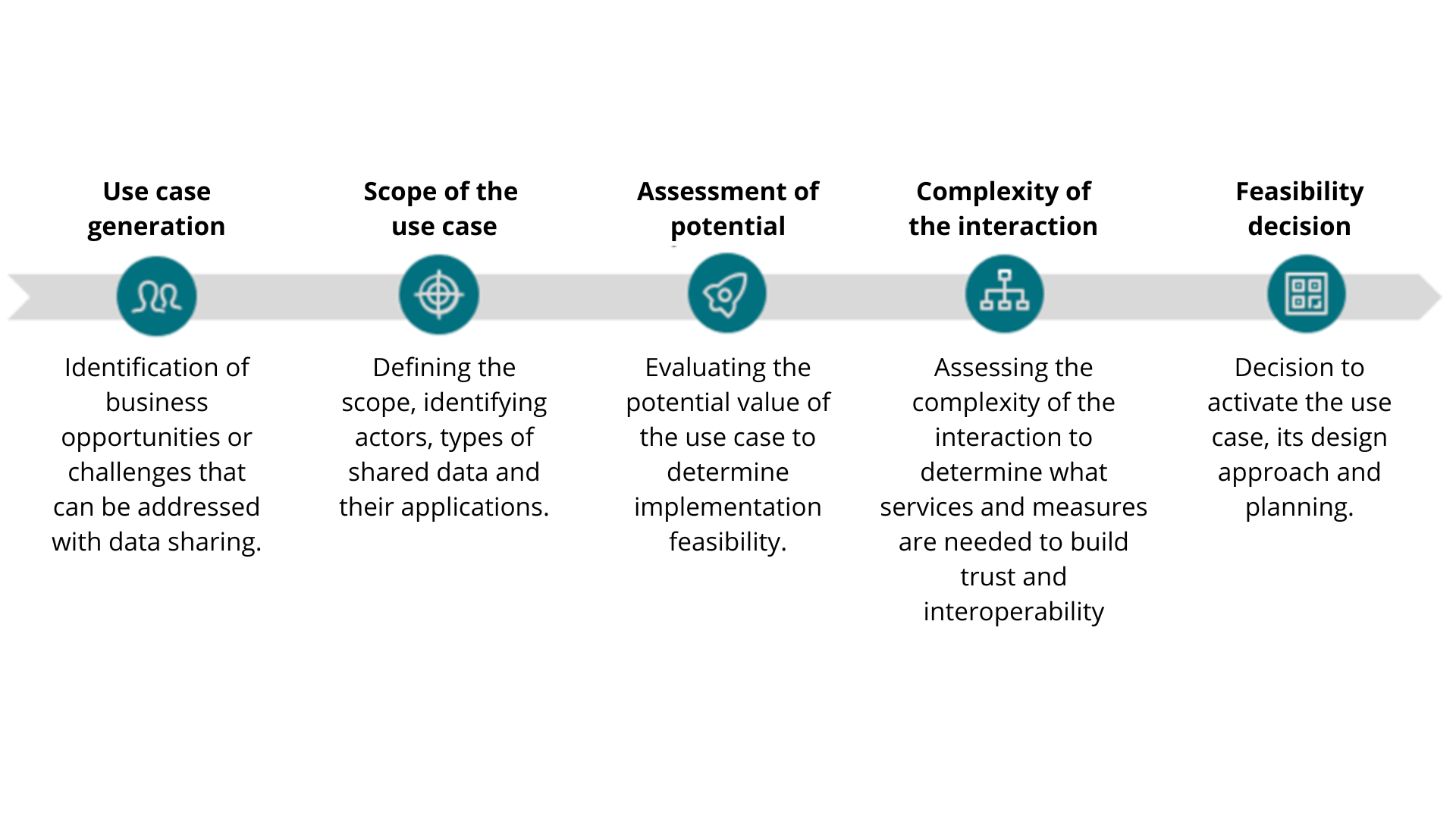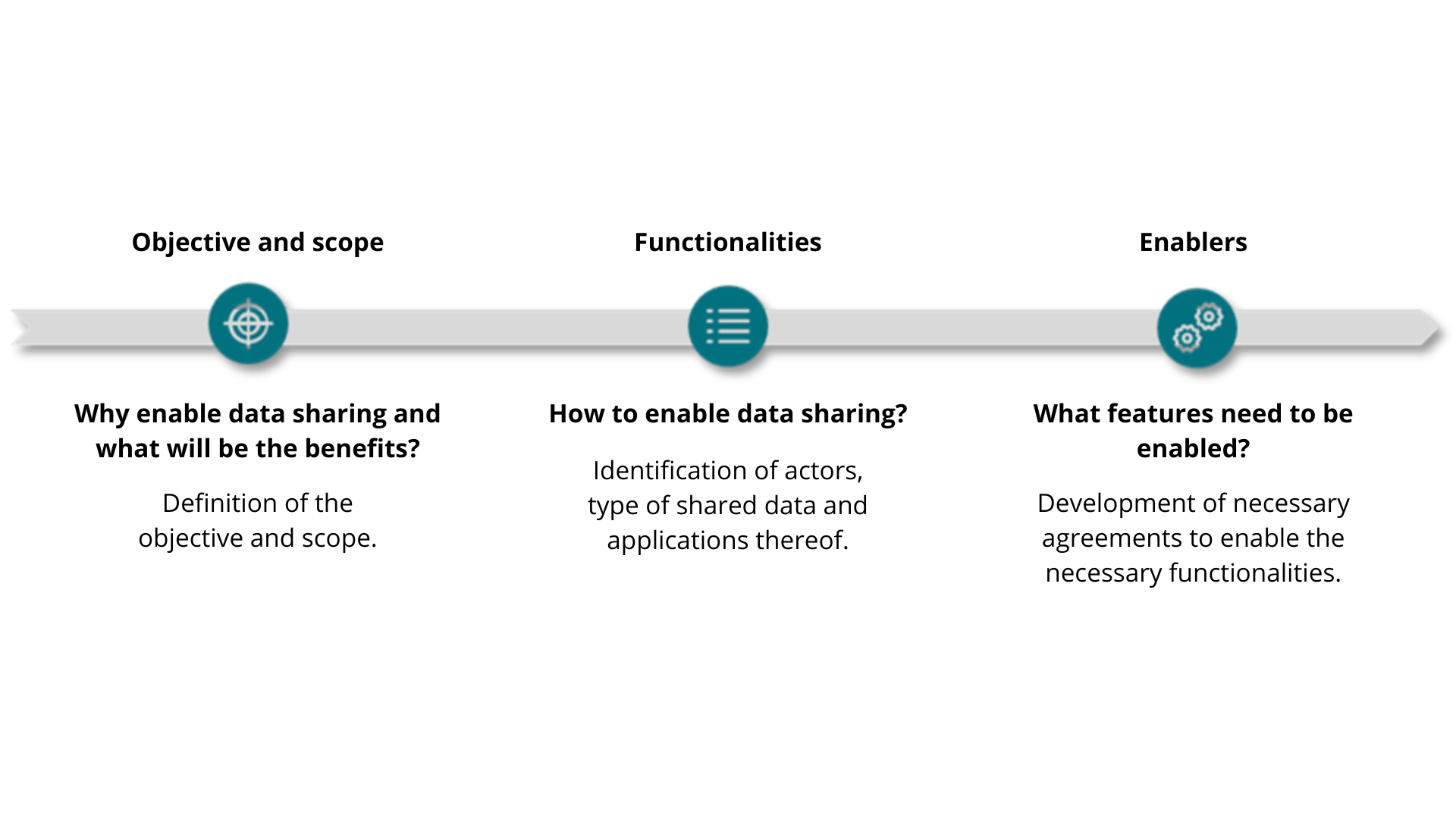Development of Use Cases in Agri-Food Data Spaces
This section describes the key steps for designing and implementing use cases within an agri-food data space. Following the model proposed by the Oficina del Dato, it offers a practical guide to building solutions based on ethical, secure, and federated data exchange.
Use cases address specific challenges in the agri-food sector by leveraging shared data through technical infrastructures and collaborative governance frameworks.
What Is a Use Case?
A use case is a concrete application of shared data among different actors aimed at solving a sectoral or societal need. In the agri-food context, this may include initiatives to reduce fertilizer use, monitor animal welfare, or generate sustainability certifications using real-world data.
Phases of Use Case Development
Building a use case within a data space follows an 8‑phase structured model [1]. These phases ensure that the solution is viable, scalable, and sustainable, aligning with the principles of interoperability, trust, and data sovereignty.

1. Business Problem Definition
A group of participants identifies a shared opportunity to share and exploit data. This may involve:
- New products or services
- Operational efficiency improvements
- Joint resolution of sector challenges
2. Data‑Driven Modeling
Structuring relevant information for informed decision‑making, including:
- Defining a data model
- Applying AI or advanced analytics
- Focusing on data‑driven decisions
3. Consensus and Requirements
Building a collaboration model among participants:
- Agreeing on participation rules
- Establishing common policies
- Defining governance and trust
4. Technical Design of the Use Case
Drafting a technical blueprint capturing agreed solutions, based on:
- Existing models
- Reusable templates or components
- Data space technical guidelines
5. Solution Construction
Developing the solution according to the blueprint, reusing or adapting technologies for efficiency.
6. Technology Development
Selecting and integrating tools to enable the data lifecycle, including:
- Platforms and infrastructure
- Interoperability components
- Access, governance, and traceability tools
7. Integration and Deployment
- Integrating the use case into the data space (if one exists)
- Conducting functional and acceptance testing
- Ensuring compliance with agreements before launch
8. Operation and Scaling
The use case is fully operational and generating real value:
- Scalable to new participants or extensions
- The data space grows in a federated and sustainable manner
- A model of continuous improvement is activated
Feasibility and Design Guidance
Once the development phases are clear, it's essential to have methodological tools to assess feasibility and properly design the use case. The Oficina del Dato has published two complementary guides to support this process [2]:
- One to evaluate feasibility
- Another to design implementation
These guides help transform an initial idea into a scalable, sustainable use case aligned with data space principles.
Feasibility Assessment
This guide enables generating, describing, and evaluating data exchange use case ideas. It proposes a methodology of five key steps to decide on the scenario’s viability:
- Idea Generation: Identify a need solvable via data sharing.
- Scope Definition: Delineate objectives, participants, and expected benefits.
- Potential Evaluation: Analyze added value in social, economic, or environmental terms.
- Interaction Complexity Study: Assess required collaboration among agents.
- Final Feasibility Decision: Decide whether to proceed to design based on the above.

📄 The guide includes a spreadsheet template with key questions to systematically complete each stage.
Use Case Design
If the use case is viable, the next step is detailed design, focusing on scalability and future reuse.
The design guide addresses:
- Precisely defining objectives and scope
- Identifying required functionalities for data sharing and exploitation
- Establishing technological, organizational, and legal enablers

📄 A template with guiding questions and real‑world examples is provided to facilitate design.
Conclusion
The two guides from Oficina del Dato offer a robust and practical methodology for developing use cases within data spaces, from conception to deployment.
Combining both ensures that use cases are not only desirable and viable but also implementable under real conditions and geared towards data reuse. This methodology is especially relevant in the agri‑food sector, where collaboration and data sharing are key to achieving just and efficient digital transformation.
Thus, any organization or team wishing to participate in a data space has a clear path to evaluate, validate, and design use cases successfully.
References
[1] Modelo de desarrollo de casos de uso para espacios de datos – datos.gob.es. Available at: https://datos.gob.es/es/blog/modelo-de-desarrollo-de-casos-de-uso‑para‑espacios‑de‑datos [2] Cómo evaluar y diseñar casos de uso para espacios de datos – datos.gob.es. Available at: https://datos.gob.es/es/blog/como‑evaluar‑y‑disenar‑casos‑de‑uso‑para‑espacios‑de‑datos‑guias‑para‑facilitar‑el‑camino